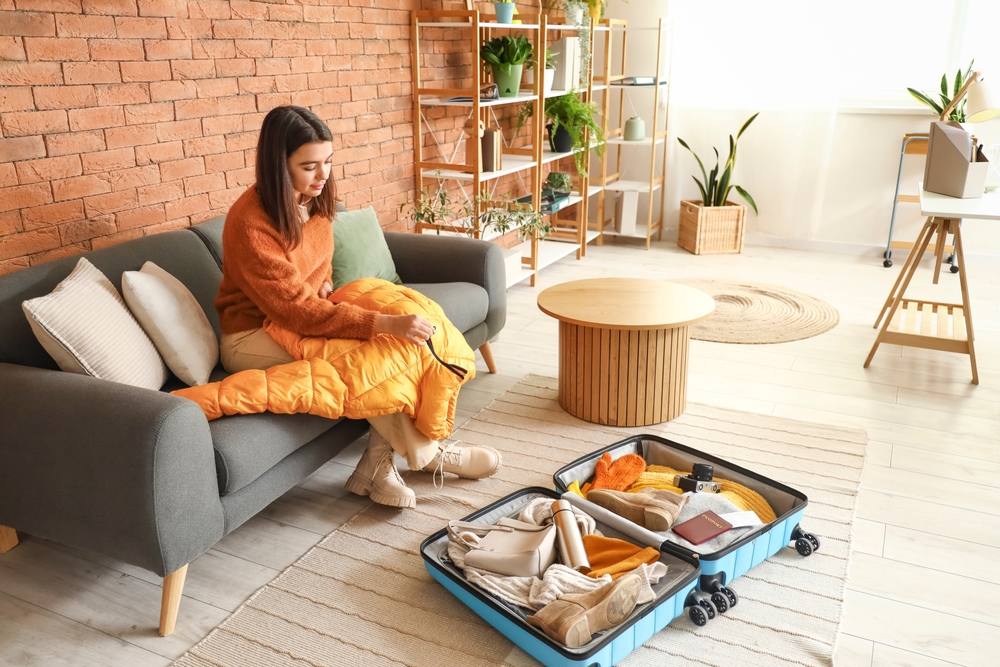Jetting off to a cold destination can be exciting. Being among snow-capped mountains and frozen forests is a traveller’s dream experience of a true winter wonderland.
Whether you’re planning a ski trip, a wellness break or just a cool getaway, packing the right gear for the colder climate is essential for a comfortable trip.
Hugo Snell, Ski Specialist at luxury holiday provider, Scott Dunn, has shared his packing non-negotiables for a cold weather trip…
- Base, middle and outer layers
“Pack your clothes with layers in mind. Firstly, consider a base layer, which should act as your moisture-wicking layer. This includes things like thermal underwear, vests and leggings. Avoid cotton where possible as it retains moisture.
“Your middle layer should be your insulation layer, such as fleece or wool sweaters, an insulated jacket or trousers.
“Finally, your outer layer should protect you from the elements, such as the wind, snow or rain. For this, consider a waterproof or windproof jacket made from GORE-TEX or similar materials and waterproof pants or snow pants. Pack accessories that cover all exposed areas such as your hands, feet, neck and face.”
- SPF
“Ensure to protect your skin from the elements like wind, cold and sun, with moisturiser and SPF of at least 30. Look for sunscreen that protects against both UVA and UVB rays, which are usually labelled as broad-spectrum protection, as not all sunscreens protect against them in the same way.
“Many travellers forget that cold climates can also have high UV rays and forget to protect their skin from the sun.”

- Weather-resistant luggage
“As obvious as it may sound, make sure your luggage – the actual bag or suitcase – is suitable for the weather conditions you are expecting at your destination. Use a durable, weather-resistant suitcase or backpack to protect your belongings from snow and ice and avoid relying on anything with wheels.”
- Waterproof boots
“Waterproof boots are essential for cold destinations as they protect your feet from snow, slush, and icy conditions.
“Having wet feet in freezing temperatures can be very uncomfortable and can lead to frostbite. Investing in good-quality waterproof boots ensures your feet stay dry, insulated, and comfortable.
“Additionally, they provide better grip on slippery surfaces, reducing the risk of injury during outdoor activities.”
Hugo has also shared how to get prepared ahead of your trip, and tips to stay safe when you are there.
- Be prepared for the weather
“Before visiting somewhere with more extreme, cold temperatures, it’s a good idea to understand the conditions that you will face so you can pack accordingly and more importantly, stay safe and comfortable while you’re there.
“Check the current and forecasted weather on different days and at different times, in the run up to your trip. This will help you to have a clear picture of the typical weather patterns and expected temperatures, as well as being aware of any advisories.”
- Hydration is key
“You may not feel thirsty in cold weather, but it’s important to have plenty of hot or cold drinks. Drinking warm liquids will help you to maintain both body temperature and energy levels, however, try to avoid too much caffeine as this can lead to dehydration and increase heat loss.
“If exposed to freezing temperatures for long periods, it’s worth packing an insulated hot water bottle, to ensure your liquids don’t freeze.”
- Consider insurance and assistance
“When visiting anywhere with extreme temperatures, it is vital to invest in comprehensive travel insurance. Ensure this provides the maximum cover and is tailored to the nature of your trip and the activities you plan to take part in. To avoid running into issues, opt for a policy that covers delays, cancellations and emergencies caused by severe weather.
- Use electronics wisely
“Not many people know that cold temperatures drain batteries faster. With this in mind, keep phones, cameras and GPS devices inside pockets close to your body. If travelling into more rural areas, it is wise to carry a GPS device with you as cell signal may be unreliable in remote areas.
“Likewise, if you are travelling in a car in rural or remote areas, use your battery and engine efficiently by driving at a steady speed and avoiding harsh acceleration, as motor vehicles require additional energy to run in cold conditions.”





